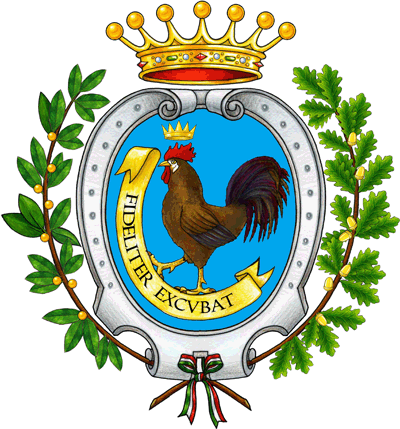GallipoliGallipoli
 It is located by the Ionian Sea, on the west coast of the Salentina Peninsula. The town of Gallipoli is divided in two parts, the modern and the old city. The new town includes all the newest buildings including a skyscraper. The old town, instead, is located on a limestone island, linked to the mainland by a bridge built in the 16th century.
It is located by the Ionian Sea, on the west coast of the Salentina Peninsula. The town of Gallipoli is divided in two parts, the modern and the old city. The new town includes all the newest buildings including a skyscraper. The old town, instead, is located on a limestone island, linked to the mainland by a bridge built in the 16th century.
[slideshow_deploy id=’50’]
History
According to a legend, the city was founded in ancient times by Idomeneus of Crete. Pliny the Elder attributes the foundation to the Senones Gauls, while more likely is that it was a Messapic settlement. Historically, what is known is that Gallipoli was a city of the Greater Greece, ruling over a large territory including today’s Porto Cesarea. In 265 it sided with Pyrrhus and Taranto against ancient Rome, suffering a defeat which relegated it as a Roman colony (later amunicipium).
In the early Middle Ages, it was most likely sacked by the Vandals and the Goths. Rebuilt by the Byzantines, Gallipoli lived an economically and socially flourishing period due to its geographical position. Later it was owned by the Roman Popes, and was a centre of fightings against the Greek monastic orders.
In the 11th century Gallipoli was conquered by the Normans and, in 1268, it was besieged by Charles I of Anjou, causing numerous inhabitants to flee to the nearby Alezio. The city was repopulated around 1300, under the feudal rule of theprincipality of Taranto. In 1484 the Venetians tried to occupy it, but without results. King Ferdinand I of the Two Sicilies started the construction of the port, which in the 18th century became the largest olive oil market in the Mediterranean.
After the unification of Italy (1861), Gallipoli was capital of a circondario, together with Lecce and Taranto. Situato lungo la costa occidentale della penisola salentina, è il quinto centro della provincia per numero di abitanti. È sede, insieme a Nardò, della diocesi di Nardò-Gallipoli. La città è protesa sul mar Ionio ed è divisa in due parti: il borgo e il centro storico. Di notevole importanza storico-naturalistica è l’Isola di Sant’Andrea, circa un miglio al largo del centro storico, caratterizzata dalla presenza di animali selvatici, come il Gabbiano corso.
Situato lungo la costa occidentale della penisola salentina, è il quinto centro della provincia per numero di abitanti. È sede, insieme a Nardò, della diocesi di Nardò-Gallipoli. La città è protesa sul mar Ionio ed è divisa in due parti: il borgo e il centro storico. Di notevole importanza storico-naturalistica è l’Isola di Sant’Andrea, circa un miglio al largo del centro storico, caratterizzata dalla presenza di animali selvatici, come il Gabbiano corso.
Il territorio del comune di Gallipoli, che occupa una superficie di 40,35 km², si affaccia sul mare Ionio con un litorale di circa 20 km comprendente anche le località di Punta Pizzo, Baia Verde, Rivabella e Lido Conchiglie. Il centro urbano, situato a 12 m s.l.m., è composto dalla città vecchia, posta su un’isola calcarea collegata alla terraferma con un ponte seicentesco, e dal borgo, che accoglie la parte più moderna della città. Il territorio confina a nord con il comune di Sannicola, a est con i comuni di Alezio e Matino, a sud con il comune di Taviano e a ovest con il mare Ionio.
Nel comune di Gallipoli ricade il parco naturale regionale Isola di Sant’Andrea e litorale di Punta Pizzo istituito con legge regionale n. 20 del 10 luglio 2006
[slideshow_deploy id=’50’]
Clima
| Per approfondire, vedi Clima della Puglia e Stazione meteorologica di Lecce Galatina. |
Dal punto di vista meteorologico Gallipoli rientra nel territorio del Salento meridionale che presenta un clima prettamente mediterraneo, con inverni miti ed estati caldo umide. In base alle medie di riferimento, la temperatura media del mese più freddo, gennaio, si attesta attorno ai +9 °C, mentre quella del mese più caldo, agosto, si aggira sui +25,1 °C. Le precipitazioni medie annue, che si aggirano intorno ai 676 mm, presentano un minimo in primavera–estate e un picco in autunno–inverno.
Facendo riferimento alla ventosità, i comuni del basso Salento risentono debolmente delle correnti occidentali grazie alla protezione determinata dalle Serre Salentine che creano un sistema a scudo. Al contrario le correnti autunnali e invernali da Sud-Est, favoriscono in parte l’incremento delle precipitazioni, in questo periodo, rispetto al resto della penisola
